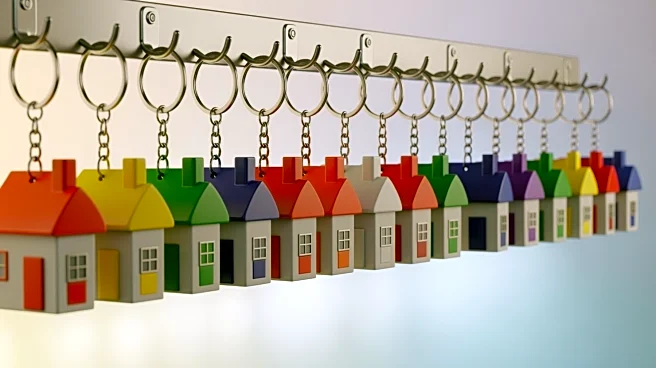What's Happening?
In Chippewa County, Michigan, the median home listing price fell to $238,250 in September, marking a 4.5% decrease from the previous month and an 8.5% drop compared to September 2024. The median home size
was 1,486 square feet, with a price of $167 per square foot. Despite the price drop, the number of new listings increased by 5.3% from the previous year. Nationally, the median home price also saw a slight decrease, reflecting broader trends in the U.S. housing market. These figures exclude new constructions and pending sales, focusing solely on existing single-family homes, condominiums, and townhomes.
Why It's Important?
The decline in home prices in Chippewa County and across the U.S. indicates potential shifts in the housing market, which could affect affordability and investment strategies. Lower prices may benefit buyers seeking more affordable housing options, but could pose challenges for sellers and real estate investors. The increase in new listings suggests a dynamic market, potentially driven by changing economic conditions or consumer preferences. These trends could influence local economies, impacting sectors like construction, real estate, and home improvement.
What's Next?
If the trend of declining home prices continues, it may lead to increased buyer activity, as more individuals take advantage of lower prices. Real estate agents and developers might adjust their strategies to cater to changing market demands. Policymakers could consider measures to stabilize the housing market and address affordability issues. Additionally, the impact on local economies could prompt discussions on economic diversification and support for affected industries.
Beyond the Headlines
The decrease in home prices may reflect broader economic conditions, such as interest rate changes or shifts in consumer confidence. This could lead to long-term changes in housing market dynamics, influencing urban development and community planning. The ethical considerations of housing affordability and access may become more prominent, prompting discussions on equitable housing policies.











